In mid-autumn, grapes ripen. At the same time, you need to harvest planting material. This will allow you to feast on sweet berries next year. But not all seedlings survive the winter. It is important to follow the rules. storage of grape cuttings in winter, the future harvest depends on their quality. You need to treat them like you would any living organism.
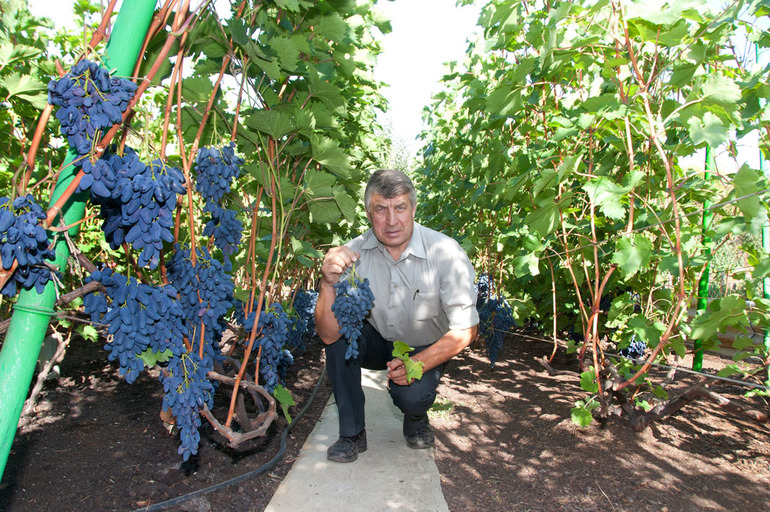
Content
Autumn works
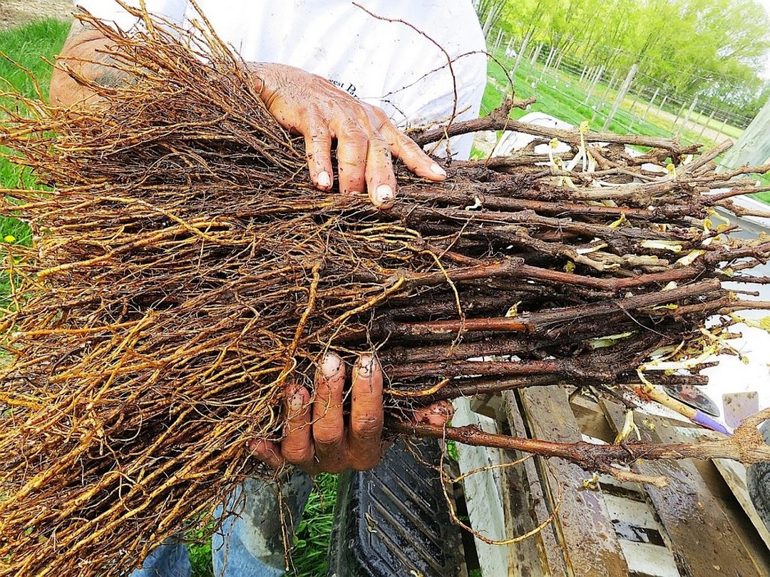
Gardeners are preparing for the next planting season individually. Some believe that it is necessary to procure material in the first months of autumn before the onset of frost, while others harden seedlings at freezing temperatures. It is best to consider the climatic conditions of a particular region. Planting material should be such as to calmly survive the winter and take root after planting in the spring.
You must also choose the right vine. There are several recommendations for this.:
- only those varieties that are needed next year will do;
- do not choose fatty and overgrown branches; it is better to prune fruit ones;
- optimal thickness - up to 1 cm;
- length depends on the number of kidneys.
The thickness of the vine is important. Thin material can not survive the winter, it just freezes. And thick branches are fattening, so they are not suitable as cuttings. Therefore, segments from 0.5 to 1 cm are suitable. You need to choose long vines, on which 5-6 buds are located. In the spring they can be cut to a suitable size. Although 3-4 buds are enough for planting the cuttings. Then grape cuttings prepare for winter storage.
Storage preparation
After selecting suitable branches, they are cut, cleaned of antennae, leaves and side cuttings. It is immediately necessary to put the markings on the forelock, since after cleaning they are almost impossible to distinguish. All varieties will look the same. Experienced gardeners offer to store the vine in winter to collect it in bunches and tie a rope, hang a label with the name of the berries.
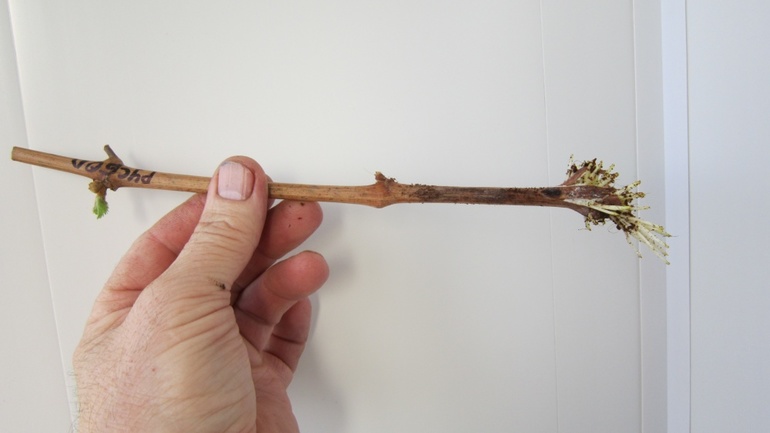
Do not use paper marking. This material can cause mold and rot. Therefore, it is desirable to make labels of foil or plastic, other synthetic materials. The marker indicates the name of the variety and the number of seedlings.
Immediately after labeling, the material must be laid out in a storage location. If this is not possible, then the cuttings are wrapped in a plastic bag or buried a few centimeters in the ground. It is better to process the cuttings within a day after pruning, otherwise they may deteriorate before the start of the planting season. So they will retain the maximum amount of moisture. If a fifth of the liquid is lost, then the vine will no longer take root.
The main ways
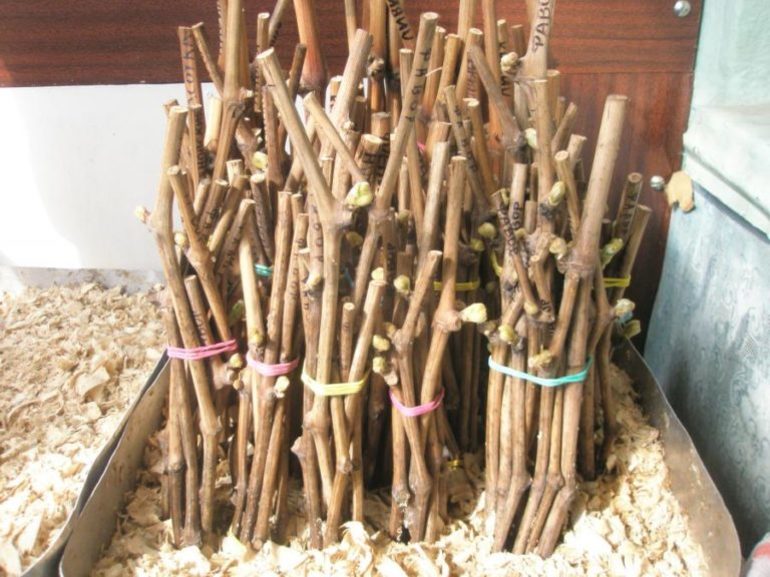
There are several ways to store grapes in winter.
Conventionally, they are divided into two types, depending on the result:
- guaranteeing their conservation;
- suitable for home use.
In the first method, a certain temperature and humidity level of the environment are strictly observed. Useful substances and moisture will be fully preserved at a mark of +0.4 degrees. But at home it is difficult to create and constantly maintain such a regime. Therefore, the second, simpler option is used. The cut vine is wrapped in bags with moist coniferous sawdust and lowered into the cellar.
Using the refrigerator

Use at home winter storage method of cuttings grapes in plastic bottles. To do this, you need a large working refrigerator with roomy shelves. If there is no free equipment, then you will have to shorten the vine to a minimum length and store in a regular grocery refrigerator.
The branches are cut, wetted with a large piece of natural fabric (cotton or linen) in a solution of copper sulfate and wrapped with cuttings. Then they are laid out in a strong plastic bag or a five-liter plastic bottle and the cork is closed, placed on the middle shelf of the refrigerator. Household appliances do not always maintain the temperature at the same level, so for the first few weeks you need to put a thermometer on the shelf along with the cuttings. The gardener should watch the indicators and, if necessary, adjust the temperature in the refrigerator.
You can not often disturb the material, it is checked no more than twice a month. Chubuki can dry quickly, in this case they are moisturized. If mold or fungus has formed on the branches, then the vine is removed, wiped with a cloth and again treated with copper sulfate. Harvested seedlings must not be cleaned with other chemicals.
Cuttings in the basement
If the owner has a cellar or basement, then it will be much easier for him to keep the vine branches in the winter. But in these rooms you need to monitor the temperature regime. In order for the cuttings to winter, the mark on the thermometer should always be positive. But if it rises above 8 degrees, then they will gobble up and will not shoot in the spring. The higher the temperature, the more moisture should be in the basement.

After preparation and treatment with vitriol, cuttings are laid out in a bag with fine wet sand or sawdust. Regularly open the polyethylene, give Chubuk breathe fresh oxygen. Check if the ash is dry, if it is covered with mold. If all this happened, then you need to remove the cuttings from the bag, clean them and treat with vitriol. Then they are dried in the open air, again packed in a bag and lowered into a cellar or basement.
Grapes in the ground

There is another effective way to store grape seedlings in winter. It is used by summer residents who do not have a cellar or basement on the site, and the size of the refrigerator does not allow them to contain packages or a bottle of vine. A minimum of effort will be required to preserve the grapes in the ground.
First they dig a shallow trench. To do this, choose a place with a slight elevation, which will allow water in the spring during snowmelt not to stagnate. If moisture covers the cuttings, then they will rot or mold. If a flat section was chosen, then near the place with the chubs a small ditch is torn out towards the slope, where liquid will accumulate.
The width of the trench depends on the number of branches. The more there are, the wider the ditch should be. The depth usually does not exceed 50 cm. Before laying in the ground, cuttings are sorted and markings are attached to them. A thin layer of sand is poured into the bottom of the pit, the chubuki are laid on top so that there is almost no distance between them. Then they are covered with wet sand 6-7 cm, a trench is buried. Do not pack the vine in polyethylene or fabric, otherwise the planting material will rot or mold.
Rooting features
After gardeners have learned to store grape seedlings in winter before planting, you need to learn about the intricacies of their rooting. Cuttings are removed from the storage place, checked for suitability. To do this, make longitudinal incisions of the eyes on one vine of each variety. If the branches are green inside, then they can be planted.Dry and rotten chubuk incisions will be black or brown.
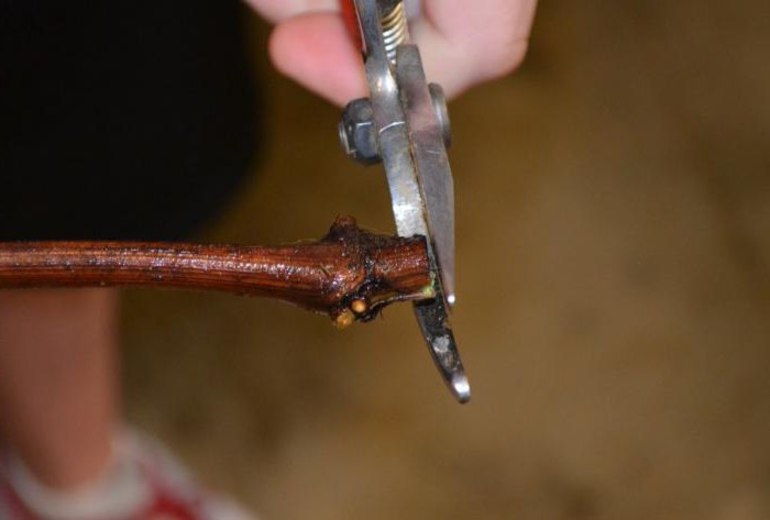
Then oblique sections at the ends of the seedlings are updated, this will improve the formation of roots. Additionally, you need to subject the cuttings to several more procedures:
- soak;
- to flick;
- kilchevat;
- to stratify;
- to stimulate.
For the first stage, melt or rain water is used. Each branch is lowered into it by 2/3 of the length and incubated for three days. If the vine has been overdried, then this time increases. After that, cuts are made on the bottom with a sharp knife. The vine must be maintained in a different temperature range. One of the options for this procedure: they dig a trench, put the lower part of the branch into it, leave the upper part in the air, and cover it with a film to create a greenhouse.
The next step is stratification. Cuttings should be placed in a warm place where the temperature reaches 20-24 degrees. The vine will wake up from hibernation, healthy seedlings will open the buds. Then they are treated with special agents that stimulate growth.
Landing
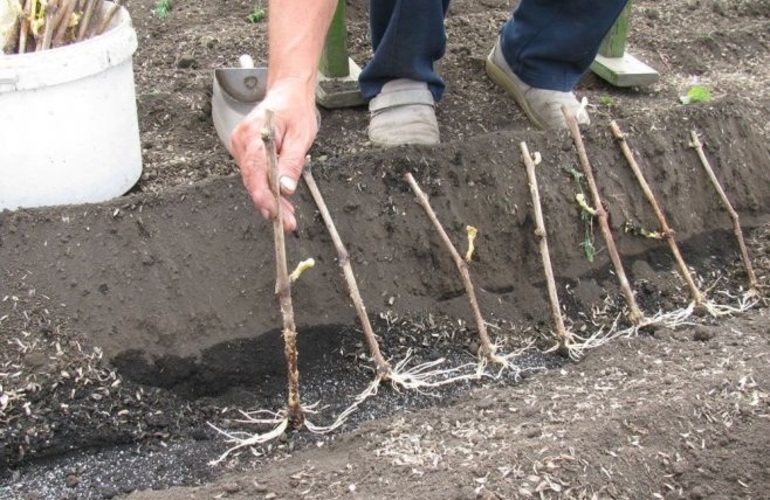
Periodically Chubuki fed with a solution of water and wood ash. The use of chemicals is not yet recommended. If the shoots grow rapidly, then pinch them. When April begins, warm and dry weather will set, the vine is transplanted into open soil. It is important not to forget to constantly water and fertilize the plant. After planting, you can apply liquid top dressing, but in moderation.
The process of preserving grape chubucks in the winter is troublesome. But buying new seedlings each year will be more costly than planting them yourself. Therefore, many summer residents learn to handle the vine during the cold months. If all the conditions are met in spring, you can get strong healthy sprouts.




 Non-covering winter-hardy grape varieties for Moscow region
Non-covering winter-hardy grape varieties for Moscow region How to keep the vine in winter
How to keep the vine in winter When can I transfer grapes to another place in the fall
When can I transfer grapes to another place in the fall How to cover and prepare grapes for the winter in the suburbs
How to cover and prepare grapes for the winter in the suburbs